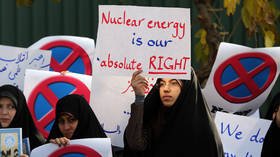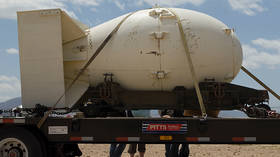Energy watchdog warns aging nuclear power plants spell doom for green future
The International Energy Agency, which advises 30 nations on energy policy, has warned the world’s sustainability and climate goals could be unattainable unless countries shore up their declining nuclear power industries.
With many of the world’s nuclear reactors aging out of their natural lifespan, and few coming online to replace them due to regulatory hurdles and cheap fossil fuels, humankind is looking at a clean energy crisis, according to the IEA. Ten percent of global electricity currently comes from nuclear power.
“Without policy changes, advanced economies could lose 25 percent of their nuclear capacity by 2025 and as much as two-thirds of it by 2040,” the IEA wrote in a report – its first on the topic of nuclear energy in 20 years. With the average American and European reactor over 35 years old, many are expected to close within five years, and there’s nothing in the pipeline to replace the energy they generated, the agency warns.
Also on rt.com The US is losing the nuclear race to Russia and ChinaWhile wind and solar power have grown over the past two decades, the decline in nuclear power means the total proportion of all global energy that can be classed as “clean” has remained constant at 36 percent. As more of the world’s 452 nuclear reactors close their doors, expanding the production of other renewables to make up the difference would be “hugely expensive,” requiring five times current investment levels. Such a paradigm shift would encounter “public resistance” and require “major power grid investment,” according to the IEA.
Compared to building new wind and solar facilities, upgrading existing reactors is cheap, according to IEA Energy Markets head Keisuke Sadamori – though “cheap” is admittedly relative, with reactor life extension costing $500 million to $1 billion per gigawatt capacity. The US has extended some of its reactors’ lifespans from 40 to 60 years, and France is looking to follow suit.
Also on rt.com Critical success: 10-month trial of Russia’s floating nuclear power plant reactor completeWhile nuclear is certainly not most people’s first thought when they hear “clean energy,” IEA director Fatih Birol said on a webcast that it is the only way to bridge the gap between current energy usage and global sustainability goals. He added that the IEA is not asking countries that have done away with nuclear power entirely to restart their programs – only for countries with operational reactors to invest in that industry.
Without action to provide more support for nuclear power, global efforts to transition to a cleaner energy system will become drastically harder.
If you like this story, share it with a friend!














